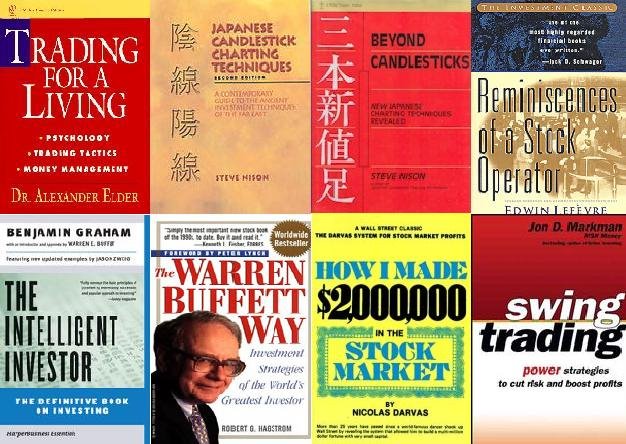
Trading is an activity of buying and selling an instrument for profits. The instrument could be a stock, commodity, futures, currencies, you name it. Today, allow me to share with you the classification of trading style via timeframes. Some of these classifications, again, is not mainstream. It’s a mere opinion of mine.
1) Scalping

This involves a large number of trades for miniscule profits. The idea of scalping is to take small profits, a lot of times. Example, say you identified a stock with high volume, you enter the trade with large order. You exit the next moment for a profit of one tick movement. Instant profits.
This is only possible when you are constantly monitoring the market, able to key in your orders, orders are executed immediately, commission rates are superbly low.
In matured markets like the
2) Day trading
As the name suggest, day trading merely means that a trade is open and closed in the same day. A daytrader could use scalping methods and enter many trades for small profits each trade, or the daytrader could open a position at the start of the market and let the profits run until end of the market day.
This also requires a fulltime job to monitor the market, commission is best to be low, ability to key in own orders and the immediate orders execution are definitely a plus point.
3) Contra trading
Sadly, we only have T+3. I remember those days, it was T+21 or something like that. Anyways, contra trading refers to the method of utilizing the T+3 timeframe before settlement is needed.
The requirement for a constant monitoring reduces slightly. However, the risk remains high. Danger of overtrading is very real here. Many who have other fulltime jobs with this method have not produced good results. Problem is often the T+3. Timing must be so impeccable – for otherwise, losses will amount.
4) Swing trading

We had T+3 contra. So this method goes for week(s). This method attempts to identify small trends and uses oscillators to assist in finding possible retracements.
Advantages of using this method includes easily maintained for working professionals. Risk is lower as actual cash is required for the T+3 settlement. Also, successful capturing of the market fluctuations would be very rewarding.
5) Trend following

As mentioned in my previous post, Why I say ROI 20% pa is no big deal, the method used is actually a trend following method. This is not unlike the Turtle System by Richard Dennis. Identify the start of a new trend. Liquidate near the end of the trend. Movements in between are merely noises, however, could be used to plan for additional entries.
The strength of this method is that it does not need a constant monitoring. This style is suited to a busy working professional. Risk is generally lower too, as one is in to ride the longer haul.
Of all the five methods listed above, there is none which is clearly superior than the other. It is merely a personal preference. Another is the time factor – the time to monitor the market. Which style is yours?
PS: Trading style mentioned above is not exhaustive. I may have missed a trading style or two.





8 comments:
If i have 10k only to invest.. I think scalping is suit for me..use large volume to buy a stock, with small movement of stock can give a gain or loss.
Example:
I buy Jotech at RM0.18x30000(0.7%)= RM5437.8
(if +0.02)
I sell Jotech at RM0.20x30000(0.7%)=RM5958.00
Gain=RM 520.2
(if -0.02)
I sell Jotech at RM0.16x30000=RM4766.40
Loss=RM-671.40
Conclusion = movement of 2 cent, loss can be greater than gain.
*Pls correct me if my example i wrong.
Sciencegto,
If you have only RM10,000 you wouldn't stand a chance in scalping against the local members - these people can enter and exit same price with no commission - hence totally no loss if they enter at 0.18 then exit at 0.18.
Plus, with only RM10,000, you could not afford to monitor the market 100% to capitalise the small movements.
Scalping when you have huge capital and you prefer to trade with huge capital rather than be exposed to long term risk. Idea is your purchase will influence the market for 5 minutes and it is already sufficient for you to exit with a profit.
Hope that clarifies.
Thanks..maybe with such amount I should put in long term stock.
You could, but thats not really my cup of tea. But I feel I must give you my reasons. One, during recession, even the most fundamentally strong company will be hit. Your investment will be devalued irregardless. If somehow during that period of recession, you needed money, (which probably you would), then you will be forced to liquidate your investment at a loss.
Secondly, I am a trader. My goal now is to trade to a million. I m not investing for my retirement fund.
With proper knowledge and experience, you could try to aim for the swing trading method or the trend following method. Best suited for working professionals who could not devote 100% of their time to monitor the market.
I have yet to find out the styles that suit me :) Perhaps different counters suitable to apply different styles or timeframes, regardless which type of trader/investor we are. :P
10K not enough to use the scalper? How much are we talking about here to be qualified as a scalper.. can be more specific? .. ehh above 100K for a transaction? :)
You could use 10K to scalp. But then you ll be at a disadvantage.
If you re an investor, you wouldnt invest in counters which passes your test - which includes management etc.
Therefore certain counters you would avoid.
If you re a trader of a specific timeframe, you would not trade counters which do not fall into your timeframe for you know you may be at a disadvantage.
Hi Max... Cool classification of trader... haha.. Guess you are very familiar with trading ya... In current market, i think i am more willing to do swing or trend trading.. hehe...
Good brief and this post helped me alot in my college assignement. Gratefulness you on your information.
Post a Comment